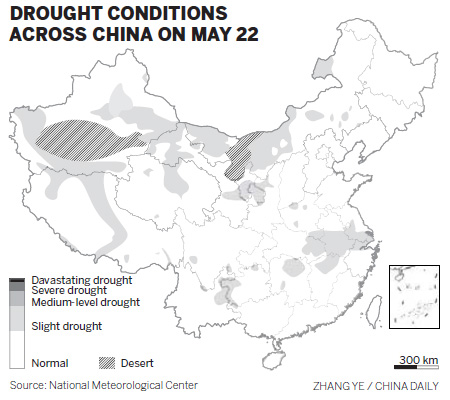Economy
Rice planting goes on despite drought
By Cheng Yingqi (China Daily)
Updated: 2011-05-23 13:10
 |
Large Medium Small |

BEIJING - Rice farmers across China finished transplanting rice into paddies this year without being seriously affected by drought, but agricultural authorities are still warning that water shortages may hinder the growth of plants.
Farmers in China are expected to plant 5.87 million hectares of rice in 2011, about 106,700 hectares more than in the previous year, according to a statement released by the Ministry of Agriculture on Saturday.
The amount they actually plant, though, will largely depend on the harm done by the drought conditions still present in Hubei province, the Poyang Lake areas in Jiangxi province, the Dongting Lake areas in Hunan province and the Leizhou Peninsula in Guangdong province. In Hubei alone, the dearth of water has affected about 200,000 hectares of rice paddies, the statement said.
The ministry, expecting heavy rains to fall on South China until Tuesday, encouraged local agricultural departments to help in the cultivation of local paddies.
The current drought has been persistent. From January to May, the middle and lower reaches of the Yangtze River only saw from 40 percent to 60 percent of the rain they had seen in the same period in previous years, according to statistics from the Office of State Flood Control and Drought Relief Headquarters.
By May 18, drought had caused harm to 6.54 million hectares of land in China, 2.2 million hectares of crops and 4.42 million people across the country.
In many places, numbers aren't needed to indicate the severity of the drought. Hongze Lake in East China's Jiangsu province, for instance, has been so reduced that the corridors and arches of a centuries-old royal mausoleum poked up on May 19 from the water they had been submerged under for 300 years.
At Honghu Lake in Hubei province, 25 percent of a 35,300-hectare lake region has dried up, causing thousands of fishing boats to run aground on the lakebed. At its deepest, the water now stands at only 30 cm, whereas it had been at between 2 and 3 meters in the past.
"The drought could cause ecological damage to the swamp," said Zeng Xiaodong, head of the lake's administrative office. Without water, fish, aquatic plants and birds that used to live in the lake are in danger.
Zeng said local authorities have managed to protect a 333-hectare region in the lake by injecting water into it since April.
In Hunan province's Luxi county, local agricultural officials have organized about 80,000 people to fight the drought by pumping water from a water reservoir.
From January to May, the county saw 60 percent less rain than it had seen during the same period last year, and only managed to water about 2,867 hectares of its 9,333 hectare of parched cropland, local officials said, adding that authorities will spare no efforts to fight the drought and ensure residents have a safe water supply.
Xinhua contributed to this story.
| 分享按钮 |



